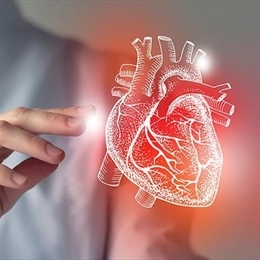Liver Cancer

Overview
The liver is located in the right upper corner of the abdominal cavity, and it is confined by the diaphragm in the upper margin, the lower ends of the ribs of the right hemithorax in the lower margin, and the stomach in the left margin. It has two lobes: the right and left lobes.
The gall bladder, which plays a very significant role in the digestive system, is just beneath the lower surface of the liver. The bile synthesized by the liver is drained into and stored in the gall bladder through tiny canals.
Compared to other cancers, liver cancer is relatively rare. Although various types of cancers develop in the liver, most liver cancer cases originate from native cells of the liver (hepatocytes). The most common one is hepatocellular cancer, but there are also other types, such as cholangiocarcinoma and hepatoblastoma. However, secondary or metastatic cancers, namely cancers that originate in and spread from another organ, are more common than primary cancers of the liver. Liver diseases may progress to severe conditions and can result in death if they are left untreated. The liver is an organ that fulfills essential functions in the body. Some of these functions are listed below:
• Storage of certain nutrients
• Processing fats into energy, when needed by the body
• Production of bile – a substance that helps the digestion
• Protein synthesis
• Support to coagulation of blood
• Production of other substances required by the body
• Detoxification of alcohol, drugs, and toxic substances, such as body waste
Risk Factors
• The known risk factors for liver cancer are as follows:
• Chronic Hepatitis B and Hepatitis C infection
• Diabetes Mellitus
• Cirrhosis
• Exposure to aflatoxin in foods
• Family history
• AgeHeavy alcohol consumption
• Abnormal fat deposition in the liver
• Smoking
• Exposure to certain chemical substances
• Types
Hepatocellular Carcinoma
It is the most common type of liver cancer. It accounts for up to 85% of primary liver cancer cases. It is more prevalent in advanced ages and men. Other types of liver cancer include cholangiocarcinoma, which begins in cells of the bile ducts; angiosarcoma (or hemangiosarcoma), which starts in blood vessels of the liver; and hepatoblastoma, which is very rare and usually affects children.
Symptoms
As is the case with most other cancers, liver cancer is also asymptomatic in the early stages. The following symptoms may develop in advanced stages. In this case, you should necessarily visit your doctor.
• Weight loss with no apparent reason
• Lack of appetite
• Pain in the right upper corner of the abdominal cavity
• Tiredness and fatigue
• Yellow discoloration of skin and sclera
• Fullness and feeling of swelling after a meal
• Pale or clay-colored stool (putty stool)
• Itching
• Chronic hepatitis or sudden worsening of cirrhosis
• Fever and abnormal sweating
Prevention
As is the case for all other cancers, prevention of liver cancer is also to eliminate or minimize manageable risks. It is substantially important to maintain a healthy weight, consumes alcohol reasonably, decrease the use of chemical substances, get vaccinated for hepatitis (Hepatitis B), avoid factors that cause hepatitis C, such as tattoos, unprotected sex, and illicit drugs, and minimize the risks that may cause liver injury, such as cirrhosis.
Diagnosis
Routine health examination and physical examination done when one visits a doctor for a complaint are the first steps in diagnosing liver cancer. Palpable liver in the abdominal exam, jaundice of skin and eyes, abnormal abdominal convexity, resultant effacement of the belly button, and loss of hair in abdominal skin point to a problem in the liver.If the imaging studies (Ultrasound, CT, MRI, PET) that are ordered to investigate findings suspicious for liver cancer show a mass, a provisional diagnosis is made.
Blood tests may also give clues that may reveal abnormalities in the functions of the liver. The definitive diagnosis of liver cancer requires a biopsy. A thin needle is inserted into the liver under the guidance of an imaging modality, mainly ultrasound, and a biopsy specimen is taken and examined.
Treatment
After the diagnosis of liver cancer is established, the next step is to determine the stage. Your doctor will evaluate the stage (I to IV) of your cancer based on a set of stringent criteria.
When liver cancer is diagnosed, your doctor will first determine the size, location, spread, and stage of the tumor.
Generally, cancer phases are symbolized by the Roman numbers I to IV. Stage IV is the most advanced stage of cancer. Treatment is planned precisely for a person based on the phase, age, general health condition, and personal preferences.
Among the treatment options for liver cancer are chemotherapy, ablation, embolization, targeted treatment, radiotherapy, and surgery. While these treatments cure the tumor, they can increase the quality of life and ease the severity of the symptoms in advanced stages. Moreover, the treatment options can be used together or alone.
Chemotherapy
Chemotherapy uses drugs to cure cancer. The active ingredients in these drugs kill cancer cells. Chemotherapy drugs can be administered intravenously or by mouth. If the drug is administrated through a vein, a thin tube, called a catheter, is inserted into a large vein, and the chemotherapy drug is delivered from this catheter throughout the treatment.
One or more chemotherapy medicines may be administered according to the response of the cancer to the treatment and the type of cancer. After chemotherapy is given for a certain period, treatment is paused. After the completion of this defined "break" period, treatment resumes. Each of these periods is called a cycle.
Side effects of chemotherapy are secondary to the chemotherapeutic agent and dose. The most common side effects seen in chemotherapy drugs include malaise, nausea, vomiting, mouth sores, hair loss, and inflammation in the digestive system. Your doctor will also treat side effects caused by chemotherapy. In case the side effects become severe enough to threaten your health, your doctor may advise you to suspend the treatment or to take another chemotherapy medicine.
Targeted Therapy
Targeted therapies are newer anti-cancer treatments compared to chemotherapy. These medicines target specific abnormalities that are present in cancerous cells. Before these medicines are started, cancer cells are analyzed in laboratories to determine whether they have particular mutations.
Radiotherapy
Radiation therapy aims to kill cancer cells by using high-powered energy beams.
If the radiation source is out of the body and beams are directed to the cancer, this treatment is called external radiotherapy. On the other hand, if the radioactive agent is put into the area where cancer is present by a needle or catheter, the method is called internal radiotherapy (brachytherapy).
Although radiation therapy can also be used as first-order therapy for cancer, generally, it is used to kill cells that are not removed by surgery. In the first-line treatment, radiotherapy and chemotherapy, also known as chemoradiotherapy, are administered together. It is essential in relieving or eliminating pain, shortness of breath, and chronic cough in advanced-stage cancers.
If liver cancer is microscopic, stereotactic radiotherapy (radiosurgery) may help kill cancer cells by focusing radiation beams precisely on the tumor. In some cases, radiosurgery may remove the requirement for traditional surgery. However, patient selection is a critical issue for radiosurgery.
The side effects of radiotherapy vary depending on the body region where the radioactive rays are transmitted.
Local Treatments
Local therapies, including but not limited to ablation – killing cancer cells by heating or freezing them-, chemoembolization – injecting chemotherapeutic agent(s) into cancer cells- or injecting alcohol into the tumor can be instituted depending on the type, size, and location of the cancer.
Surgery
Surgery is the definitive treatment for the liver cancer. Your surgeon may remove the tumor along with a small amount of tissue around the tumor; if the cancer is small, more than one tumor exists, a sufficient amount of liver tissue will remain after the surgery, and the location of the cancer allows a surgical procedure. Again, removal of one lobe of the liver is a surgical option.
For patients with a liver that is almost entirely affected by the cancer, the only surgical option is a liver transplant. The liver of the patient is completely removed, and the donor (living or deceased) liver is transferred to the patient.
Asking your questions about the treatment of liver cancer, your life after treatment, rehabilitation, pain management, clinical studies, and all the questions in your mind about liver cancer doctors will help you participate in your treatment and alleviate your concerns.




























